
The Breed History
Written records originate in the early 1600s when setting dogs
of exceptional endurance were described. This type of dog was
of Scottish origin, and was bred as a one-man gundog. The word
"Setters" was used because these dogs were known to "set" when
they had the prey in site. The set was a semi-seated position. The
black and tans were a favorite of the Duke of Gordon in the early
1800s and they are thought to take their name from this man.
Gordon setters first came to North America in the mid 1800s. They
were first registered with the AKC in 1892.
Breeding for Function
They are popular both as a show dog and a reliable hunting dog.
Field lines are slightly smaller in stature. Gordons excel at pointing
and retrieving birds. They are excellent scent trackers, and are noted
to be slow but steady.
Physical Characteristics
Height at Withers: female 23-26" (58.5-66 cm), male 24-27"
(61-68.5 cm)
Weight: females 50-70 lb (22.5-32 kg), males 55-80lb (25-36.5 kg).
Weights vary widely within the breed.
Coat: All dogs are a glossy black with rich mahogany to chestnut
markings. Their hair is slightly wavy or straight, fine-textured with
long hairs, and on the tail they have moderate feathers. Junctions
of markings with the coat are clearly delineated, not smudgy.
Acceptable markings have very specific size and distribution in this
breed. Regular grooming is important and they are considered an
average shedder. Red coat color: Caused by an autosomal recessive
gene (ee). Normally tan markings can be differentiated, especially
when viewed in sunlight. Recessive e allele occurs in low frequency
in the breed, and can be tested for by VetGen.
Longevity: 10-12 years.
Points of Conformation: The head is chiseled with a strong, square
long muzzle and low set, heavy ears. His sturdy bone and robust,
athletic build suits his reputation for stamina. The back is strong
and short, with a moderately sloping topline. The thorax is deep
with moderate girth, and the tail tapers not quite at the level of the
tarsus, and is carried close to horizontal. Dewclaws may be removed.
They have compact feet with arched toes and straight strong limbs.
Their gait is characterized by long easy strides, and it is normal to
see the tail flag while going. Legs arc in a straight flowing motion.
Recognized Behavior Issues and Traits
Reported breed traits include: They are aloof with strangers, but
show devoted loyalty to home and family. They are intelligent, alert
and fearless and should be socialized early. They are generally good
around children. Gordons require plenty of exercise. Training should
also start early because like most hunting breeds, they have a streak
of independence. They should not be allowed off-leash unless
fenced. They have a tendency to bark, and if left alone for extended
periods, may resort to boredom digging or chewing.
Normal Physiologic Variations
None reported
Drug Sensitivities
None reported
Inherited Diseases
Hip Dysplasia: Polygenically inherited trait causing degenerative
joint disease and hip arthritis. OFA reports 19.5% affected. French
Kennel Club screening shows 30.8% affected between 2000-2006.
Elbow Dysplasia: Polygenically inherited trait causing elbow
arthritis. OFA reports 13.6% affected. Reported 19.8x odds ratio for
the fragmented coronoid process form of elbow dysplasia versus
other breeds.
Patella Luxation: Polygenically inherited laxity of patellar
ligaments, causing luxation, lameness, and later degenerative joint
disease. Treat surgically if causing clinical signs. Too few Gordon
Setters have been screened by OFA to determine an accurate
frequency.
Progressive Retinal Atrophy (PM): Two progressive retinal
atrophies occur in the breed. An autosomal recessive rcd4 form
causes progressive loss of vision at an average of 10 years of age. A
genetic test is available for this form of PRA. Testing in the US shows
30% carrier and 3% affected. An earlier onset, presumed autosomal
recessive PRA also occurs in the breed with an average age of onset
between 3 and 6 years of age. A genetic test is not available for this
form. PRA is identified in 0.6% of Gordon Setters CERF examined by
veterinary ophthalmologists between 2000-2005.
Cerebellar Abiotrophy (CCA, Cerebellar Ataxia): Autosomal
recessive disorder causing cerebellar hypermetria, a high stepping
gait, and incoordination. Clinical signs usually progress slowly
throughout the life of the dog, however some can progress more
rapidly to constant stumbling. Diagnose by clinical signs, MRI/CT, or
post-mortem examination. Occurs at a low frequency, with a wide
pedigree spread worldwide.
Lethal Inherited Encephalopathy (LIE, DUNGd): Fatal, autosomal
recessive disorder causing gait and postural abnormalities,
progressive weakness, and recumbency by 5-6 weeks of age.
Puppies develop normally until 3-4 weeks of age, when they begin
to cry incessantly, flex their necks, and walk backwards. Caused by
an undetermined metabolic abnormality in glycine conjugation
resulting in an organic aciduria. Occurs at a low frequency, with a
wide pedigree spread.
Disease Predispositions
Sebaceous Cysts: GSCA 2004 Gordon Setter Health Survey reports
25.53% of Gordon Setters develop benign sebaceous cysts. Dorn
reports a 1.99x odds ratio of developing sebaceous cysts versus
other breeds.
Hypothyroidism: Inherited autoimmune thyroiditis. 11.6% positive
for thyroid auto-antibodies based on testing at Michigan State
University. (Ave. for all breeds is 7.5%).
Lymphosarcoma: Both B cell (multicentric lymph node cancer)
and T cell (cutaneous lymphoma/mycosis fungoides) lymphoma are
reported in the breed. The 2004 GSCA Gordon Setter Health Survey
reports 3.27% of Gordon Setters affected with lymphosarcoma.
Dorn reports a 15.52x odds ratio of developing lymphosarcoma
versus other breeds.
Persistent Pupillary Membranes: Strands of fetal remnant
connecting; iris to iris, cornea, lens, or involving sheets of tissue.
The later three forms can impair vision, and dogs affected with
these forms should not be bred. Identified in 4.41% of Gordon
Setters CERF examined by veterinary ophthalmologists between
2000-2005.
Gastric Dilatation-Volvulus (Bloat, GDV): Polygenically inherited,
life-threatening twisting of the stomach within the abdomen.
Requires immediate treatment. 2004 GSCA Gordon Setter Health
Survey reports a 4.01% affected rate. Dorn reports a 4.74x odds ratio
of developing GDV versus other breeds. Glickman reports a 4.1x odds
ratio.
Oral Malignant Melanoma: Malignant cancer usually involving
the gingiva in this breed. Can be pigmented or non-pigmented. One
study identified a 5.17x relative risk versus other breeds.
Ectropion: Rolling out of eyelids, often with a medial canthal
pocket. Can also cause secondary conjunctivitis, which Dorn finds
has a 2.49x odds ratio in Gordon Setters versus other breeds.
Ectropion is reported in 1.2% of Gordon Setters CERF examined by
veterinary ophthalmologists between 2000-2005.
Retinal Dysplasia: Retinal folds, geographic, and generalized retinal
dysplasia with detachment are recognized in the breed. Can lead to
blindness. Reported in 1.6% of Gordon Setters CERF examined by
veterinary ophthalmologists between 2000-2005.
Juvenile Renal Disease: Progressive renal dysfunction in young
Gordon Setters. Typically presents with increased drinking and
urination, weight loss or unthriftiness, consistently dilute urine,
and elevated kidney blood tests. Affected dogs do not leak urinary
protein until late in the disease. Onset from weeks of age to over a
year in age. Some dogs remain with mild signs, while others rapidly
progress to kidney failure. Unknown mode of inheritance, with a
wide pedigree spread. Diagnosis by kidney biopsy or pathology.
Symmetrical Lupoid Onychodystrophy (SLO): Disorder causing
loss of toenails. Onset between 2-8 years of age affecting 1-2 nails,
then progressing to all toenails within 2-9 weeks. Requires lifelong
treatment with oral fatty acid supplementation +/- prednisone.
Kindreds of affected Gordon setters have been identified, but a
mode of inheritance is not known. Antinuclear antibodies were
identified in some affected dogs.
Cataracts, Entropion, Epilepsy, Hypertrophic Osteodystrophy,
Juvenile Cellulitis, Keratoconjunctivitis Sicca, and Micropapilla
are reported.
Isolated Case Studies
Black Hair Follicular Dysplasia: Isolated case reports of affected
Gordon Setters. Loss of black hairs beginning around 4 weeks of
age. Total loss of all black hair by 6-9 months of age. No treatment.
Antinuclear antibodies were identified in some affected dogs.
Vitiligo/Leukotrichia: Isolated case reports of 6-12 year old
Gordon Setters with progressively expanding areas of white hair,
often beginning on the head or neck. Caused by autoantibodies to
pigmented cells. Does not affect the health of the dog. Can affect
both black and tan areas, however some cases begin in only the tan
areas. Unknown mode of inheritance.
Vitamin A Responsive Dermatosis: Isolated case reports of
affected Gordon Setters. Causes pruritis in this breed, especially
on top of back with small firm hives. Responds to Vitamin A
supplementation. Relapses if treatment is stopped.
Congenital Venous Aneurysm: Unilateral dilatation of the right
jugular, maxillary, and linguofacial veins identified in a 5 month old
Gordon Setter. The aneurysm was removed surgically.
Reticuloendotheliosis: Seven year old Gordon Setter presented
with progressive weakness, debility, and diarrhea with melena.
Clinical evaluation revealed splenomegaly, severe nonregenerative
anemia, thrombocytopenia and leukopenia with many large blast
cells in the peripheral blood.
Genetic Tests
Tests of Genotype: Direct test for black, liver, and red coat color is
available from VetGen.
Direct test for rcd4 PRA is available from the Animal Health Trust
Tests of Phenotype: CHIC Certification: Required testing includes
hip radiographs, elbow radiographs, and CERF eye examination. (See
CHIC website; www.caninehealthinfo.org).
Recommend thyroid profile including autoantibodies, patella
evaluation, and heart examination.
Miscellaneous
- Breed name synonyms: Gordon, Black and Tan (historical)
- Registries: AKC, CKC, UKC, KCGB (Kennel Club of Great Britain),
ANKC (Australian National Kennel Club), NKC (National Kennel Club)
- AKC rank (year 2008): 92 (636 dogs registered)
- Internet resources: Gordon Setter Club of America Inc.
www.gsca.org
British Gordon Setter Club: www.britishgordonsetterclub.org.uk
Gordon Setter Club of Canada: www.gordensetterclubcanada.com
Photo Gallery of Breed - Gordon Setter - Dog Breed
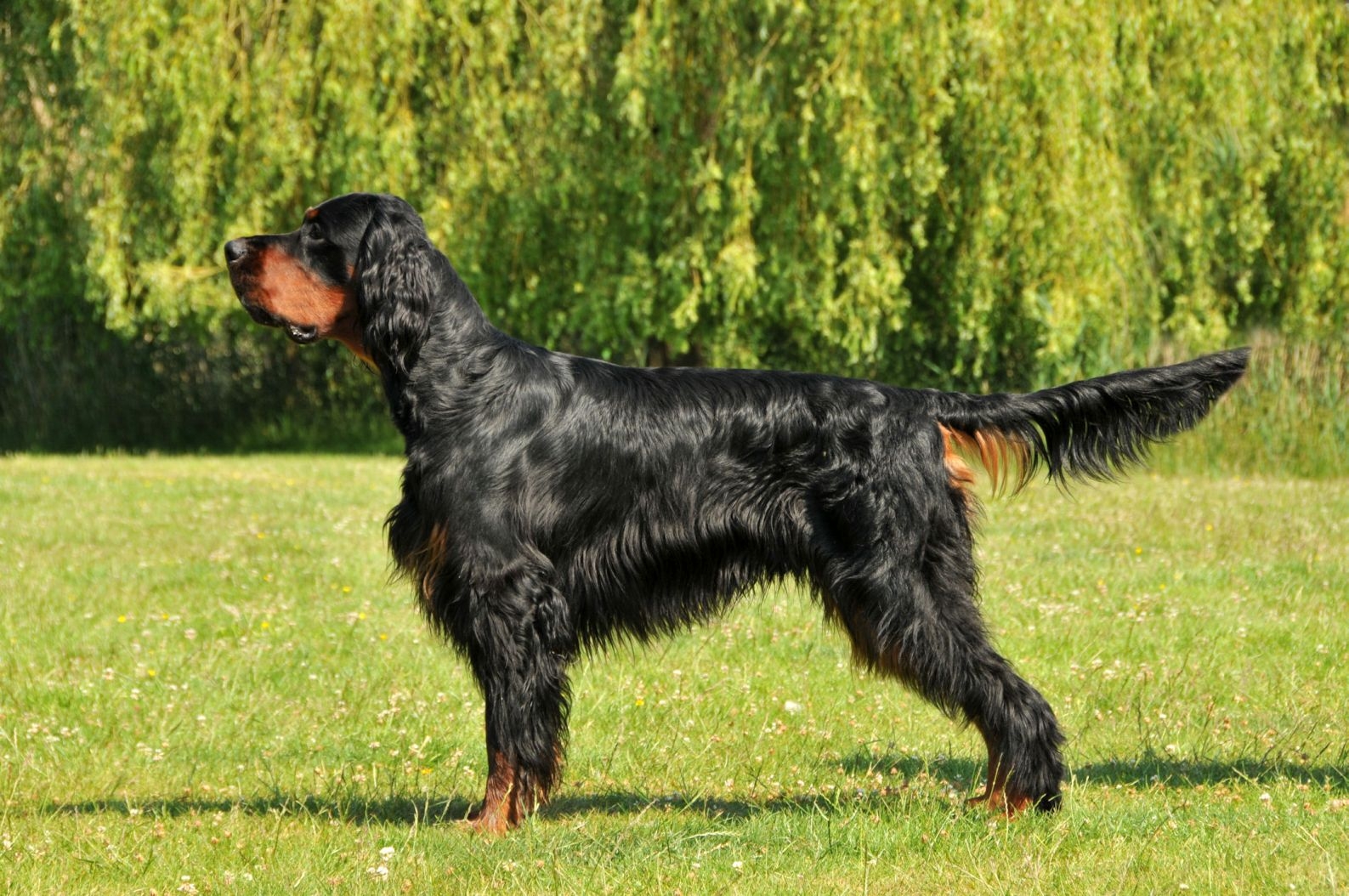



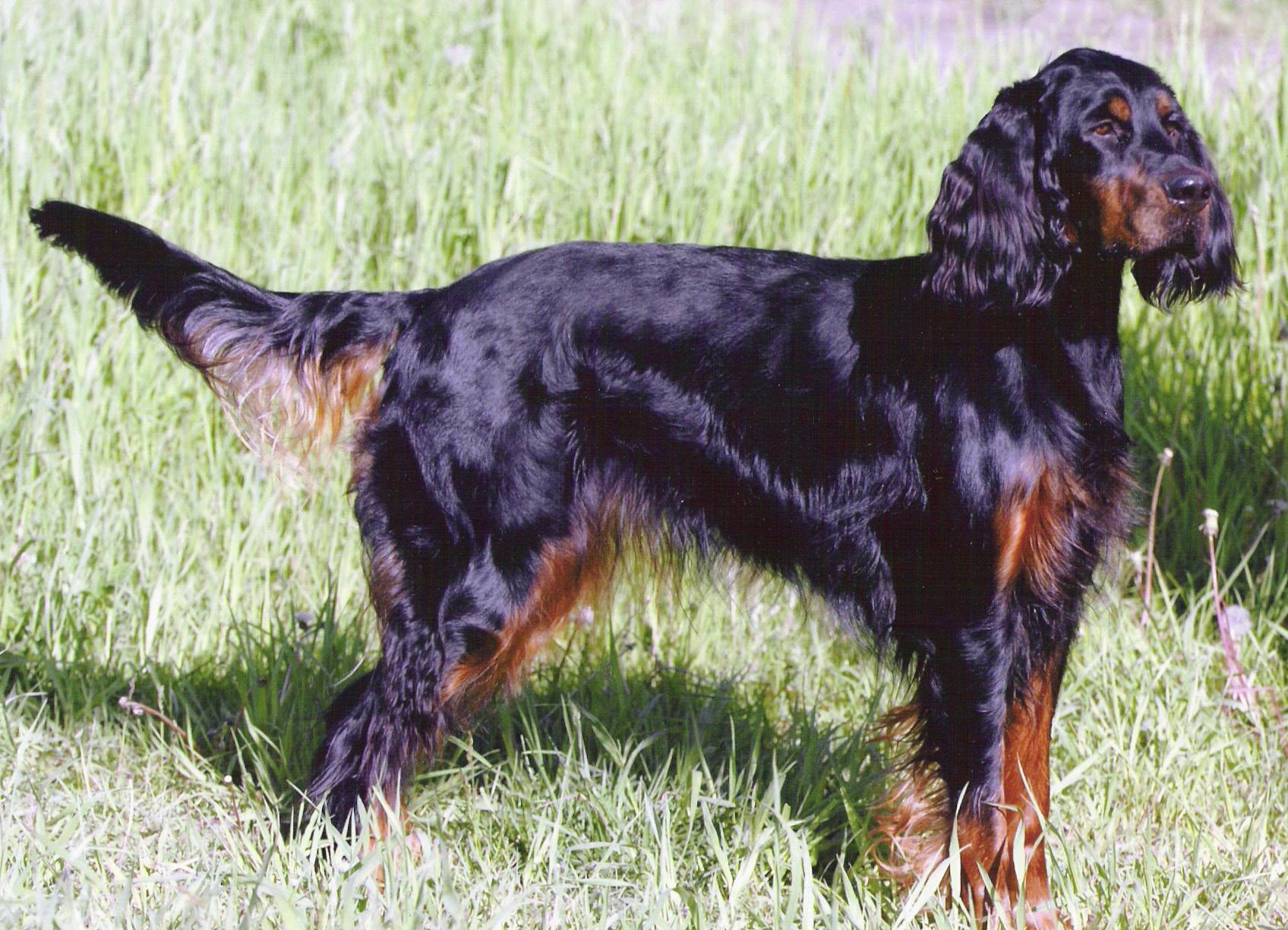
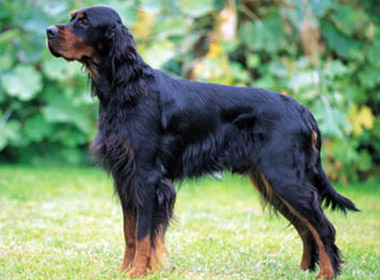
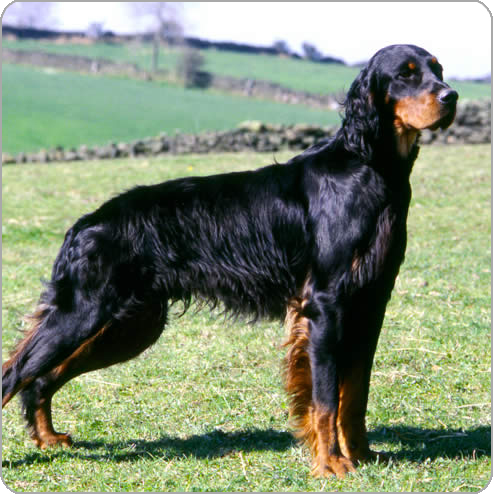
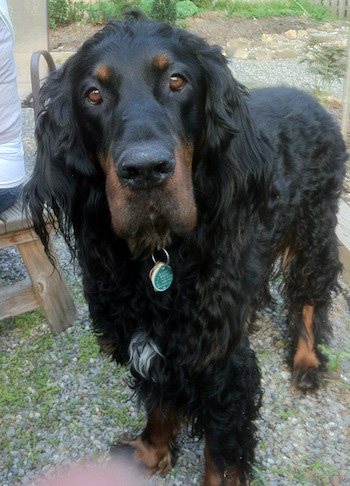
 Animalia Life
Animalia Life